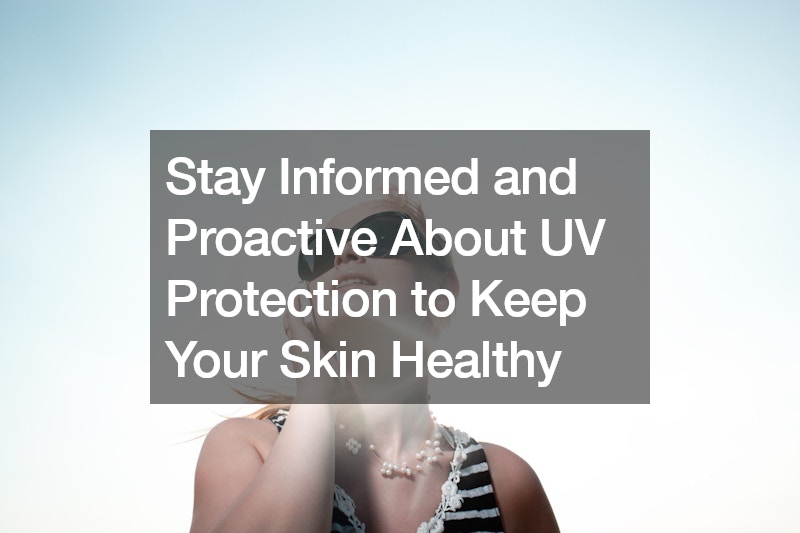Ultraviolet (UV) radiation is a powerful form of electromagnetic radiation emitted by the sun, falling between visible light and X-rays in terms of wavelength. Despite its unseen nature, UV radiation has a profound impact on both our health and the environment. Understanding UV radiation’s benefits and risks, as well as how to protect yourself, is crucial for maintaining optimal skin health and overall well-being.
The Benefits of UV Radiation
UV radiation plays a significant role in our health, particularly in the production of vitamin D. This essential vitamin is crucial for bone health, immune function, and overall bodily functions.
When UV rays strike the skin, they stimulate the production of vitamin D, which helps regulate calcium and phosphorus levels in the body. For most people, a short amount of sun exposure—around five to fifteen minutes a few times a week—is enough to maintain healthy vitamin D levels. This makes moderate sun exposure an important aspect of a balanced lifestyle.
In addition to vitamin D synthesis, UV light has therapeutic uses. It is employed in the treatment of various skin conditions such as psoriasis, eczema, jaundice, vitiligo, atopic dermatitis, and localized scleroderma. The controlled use of UV radiation in medical treatments can help alleviate symptoms and manage these conditions effectively.
The Risks of UV Radiation
While UV radiation offers several benefits, overexposure can lead to significant health issues. One of the most immediate effects of excessive UV exposure is sunburn. This condition occurs when UV rays damage the skin’s outer layers, causing redness, pain, and peeling. Prolonged exposure can also lead to more severe consequences, including an increased risk of skin cancer.
UV radiation is classified into three types: UVA, UVB, and UVC. Each type has distinct effects on the skin:
UVA Radiation
This type of UV radiation has a longer wavelength and penetrates the skin more deeply. It is primarily associated with skin aging and wrinkles. Although UVA was once considered less harmful than UVB, it is now recognized as a significant contributor to skin cancer through indirect DNA damage caused by free radicals.
UVB Radiation
UVB has a shorter wavelength than UVA and is responsible for causing sunburn. It can directly damage DNA in skin cells, which is a primary factor in the development of skin cancer. UVB rays are partially blocked by the ozone layer, but their intensity can still cause significant harm, especially during peak sunlight hours.
UVC Radiation
UVC rays have the shortest wavelength and the highest energy. They are the most dangerous type of UV radiation but are completely absorbed by the Earth’s ozone layer and do not reach the surface. However, thinning of the ozone layer due to environmental factors raises concerns about increased UVC exposure.
How to Protect Yourself from UV Radiation
Given the potential risks associated with UV exposure, protecting yourself is essential. Here are several effective strategies to minimize UV-related damage:
Use Sunscreen
Applying sunscreen with broad-spectrum protection is one of the most effective ways to guard against both UVA and UVB rays. Look for sunscreens with a high SPF (Sun Protection Factor) and ingredients such as titanium dioxide, zinc oxide, and avobenzone, which offer additional protection against UVA rays. Remember to reapply sunblock every two hours and after swimming or sweating.
Wear Protective Clothing
Clothing can act as a barrier between your skin and UV radiation. Opt for long-sleeved shirts, wide-brimmed hats, and UV-protective sunglasses to shield your skin and eyes. Consider shopping at a sun protection apparels shop for fabrics specifically designed to provide additional UV protection. These specialized garments can offer enhanced defense against harmful UV rays.
Seek Shade
Between 10 a.m. and 4 p.m. is when the sun’s rays are strongest. It is best to stay in the shade during these hours. If you’re outdoors, use umbrellas or canopies to reduce direct sun exposure.
Avoid Tanning Beds
Tanning beds emit UV radiation that can increase your risk of skin cancer and accelerate skin aging. Instead of using tanning beds, consider self-tanning products or sprays for a safer alternative.
Monitor UV Index
Check the UV index before you head outdoors. This measure indicates the strength of UV radiation on a given day and can help you plan your activities to minimize exposure.
Regular Skin Check-ups
Regular dermatological examinations can help detect early signs of skin damage or skin cancer. It’s important to monitor any changes in your skin and consult a healthcare professional if you notice any unusual spots or growths.
Key Takeaways
UV radiation, while essential for vitamin D production and beneficial in certain medical treatments, poses significant risks if not managed properly. Understanding the different types of UV radiation and their effects on the skin is crucial for safeguarding your health. By adopting protective measures such as using sunscreen, wearing appropriate clothing, and seeking shade, you can enjoy the benefits of UV exposure while minimizing its harmful effects. Stay informed and proactive about UV protection to keep your skin healthy and vibrant.
.
